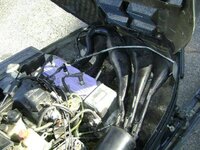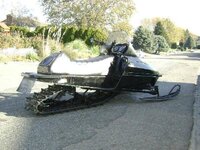If you have the "high port, 96hp" XLT engine, identified with 38mm carbs, you are in for a tough time. I had a '97 version in an Xtra 12 chassis. The first season, perfection, then nothing but grief. From the second season on this engine took the term "hard starting" to the apogee of misery. Cold, no problem, then the engine warms, then the rest of the day, rope till it bleeds - then under totally miraculous reasons it starts and runs great till you were stupid enough to turn it off. Sometimes too much fuel, sometimes not enough. Sometimes it would feign fuel starvation and you would choke it... rats, bad.
My buddies with the 90hp XLTs, 34mm carbs, just laughed and drove off, not being able to deal with the misery.
Another buddy had the 96hp engine and further exasperated the bad ju-ju by triple piping his XLT. Yes, more delicate the whole starting procedure now, lots more items to go out of balance. This guy never forgave Team Polaro.
I tried installing 34mm carbs on the engine, but to no avail - just a terribly bad designed engine that, to me, gave the 600 triples the death boot.
No help, but maybe some history round out your troubles. Been there way too many times. Cheers.






